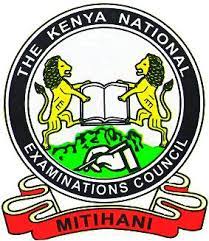
SECTION A (32 marks)
Answer ALL the questions in this section in the spaces provided after each question.
1. State four qualities of a good questionnaire. (4 marks)
2. A shop stocks two types of jembes, type I and type II. Twelve type I jembes and five type II jembes cost Ksh. 1,260, while nine type I jembes and fifteen type II jembes cost Ksh. 1, 620. A farmer bought ten type II jembes. Determine the amount that he paid for them. (4 marks)
3. The total revenue of a firm is given by the function:
TR = 10Q2 – 200Q
Determine the level of output (Q) that will maximize total revenue. (3 marks)
4. Outline four advantages of using tables in the presentation of data. (4 marks)
5. Determine the interquartile range for the following set of numbers:
6. Highlight four properties of a good measure of central tendency. (4 marks)
7. The following data relates to a project, A.
Returns (Ksh. 000’s) Probability
Outcome I 6,000 0.2
Outcome II 7,000 0.5
Outcome III 5,000 0.3
Determine the expected returns of the project. (3 marks)
8. Explain the meaning of each of the following terms as used in network analysis:
(i) Dangling activity;
(ii) Loop;
(iii) Event.
(3 marks)
9. The profits of company X for a period of five years are given as follows:
Year Profits (Ksh. millions)
2000 10
2001 15
2002 12
2003 8
Using the chain base index method, construct the indices to show changes in profits for each year. (2 marks)
10. Distinguish between ‘trend’ and ‘seasonal’ variations in a time series. (2 marks)
SECTION B (68 marks)
Answer any FOUR questions from this section in the spaces provided in this question paper.
11. (a) Ms. Jones saved Ksh. 20,000 during the first year of employment. In each subsequent year, she saved 15% more than the preceding year, until she retired. Determine the:
(i) amount saved in the third year;
(ii) number of years it would take her to save a sum of Ksh. 580,000;
(iii) total amount she had saved after 20 years of service. (9 marks)
(b) Explain four limitations of relying on secondary data in business decision making. (8 marks)
The following information was extracted from the records of a company showing the expenses that were incurred in running the production plant for the last 10 years

(i) Calculate the Pearson’s Product Moment Co-efficient of Correlation;
(ii) Interpret the result in (i) above. (9 marks)
A company has tendered for two contracts, A and B. The probability of winning contract A is — and that of winning contract B is — . 3 5
Determine the probability of winning:
(i) no contract;
(ii) at least one contract;
(iii) contract A or B;
(iv) contract A and B.
13. (a) The prices and quantities of three commodities in a country for the years 2005 and 2010 are given in the table below




